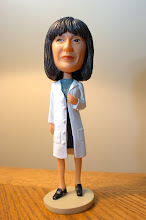 Vitamin E – this is another one of those vitamins that we all assume we know quite a bit about, so let’s see what you really do know about our next to last vitamin.
Vitamin E – this is another one of those vitamins that we all assume we know quite a bit about, so let’s see what you really do know about our next to last vitamin.Vitamin E is not a single chemical, but rather two groups of compounds: tocopherols and tocotrienols; and within each of these there are 4 compounds (alpha, beta, delta, gamma) and their mirror images (known as isomers) – very confusing! The best bioactive form is alpha-tocopherol and that is what all of the various compounds are measured against. The natural form is d-alpha-tocopherol and the synthetic version is dl-alpha-tocopherol. It is one of the few vitamins that your body can distinguish between the natural and synthetic versions, but both are very bioactive and therefore effective.
The name “tocopherol” means “to bring forth in childbirth” in Greek and it is because the vitamin was discovered by feeding pregnant rats a specialized diet and finding that a previously unknown compound was needed for them to carry their fetuses to term. And although Vitamin E was once referred to as an “anti-sterility vitamin” it does not appear to help with that problem.
Vitamin E is stored in your adipose tissues because of its high lipid solubility. It is best known perhaps for its antioxidant properties; it is the major antioxidant found in the lipid portion of the cellular membranes in your body protecting them from peroxidation.
Vitamin E counteracts the artherogenic effects of the breakdown of good cholesterol (LDL) which involves too many processes too complicated to go into here (like nitric-oxide mediated arterial relaxation and inhibition of platelet aggregation), so let’s just suffice to say that Vitamin E is good for your heart and circulatory system.
It also helps with your immune system, especially when phagocytosis is involved, but you need to ingest levels 4-6 times higher that what normal diets contain. So in essence: the older you are – the more depressed your immune system gets – and the more vitamin E you should be consuming.
Good sources of vitamin E are grains, nuts, beans, seeds and their oils, eggs, and butter. This is unfortunate, because these are “fatty foods” that many people are cutting out of their diet, or at least cutting back on, and that means we are getting less vitamin E. The good news is that vitamin E from food sources is not toxic, so you can’t get too much of a good thing that way!
Well, how well did you do; did you know vitamin E as well as you thought? Good, next will be the last vitamin, vitamin K, one of the least well known of its brethren. However, it will be a couple of weeks between posts as I'm off to attend the Institute of Food Technologists conference tomorrow. And as always, let me know what you want to know about - we are about to move onto a new chapter and I want to make sure it is a chapter you want to read!






No comments:
Post a Comment